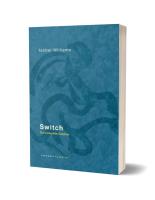
Carcanet (2023) p/b 220pp £16.99 (ISBN 9781800173392)
If you are looking for a conventional translation of Catullus, one that attempts to convey the meaning of the Latin and perhaps some of the style, then this is not the volume for you. Catullus is there and occasionally without embellishment: W.’s version of poem 70 (nulli se dicit …) for example is a clever translation/adaptation. Catullus’ two couplets are rendered in two four-line stanzas, his repetition of dicit is caught by ‘She says’ and ‘Her words’ opening each stanza. W.’s lively translations of Iuppiter (‘God Almighty’), cupido (‘rampant’) and rapida…aqua (‘swollen river’)—to take but three examples—are typical of the quality of her work. In contrast to her usual practice, the Latin of poem 85 is given in full. This is a mere two lines long, but it is a powerful and memorable poem. The stark contrast odi et amo in particular stands out. W.’s accompanying translation renders this couplet in 20 lines, and perhaps it will be considered self-indulgent, although the adaptation is not without its startling innovation (‘Hate-love-hate-love you ask why the needle’s stuck’). Other flashes of wit are to be found passim—the final epigram (116[B]) has 21 notes, of which the first is ‘There is no116(B)’ and the last ‘See you later, annotator’.
W. uses shibari (Japanese rope bondage) as a ‘context’ and her line drawings which accompany the text illustrate the shifting of dominance/submission. Catullus, she says, was held in emotional bondage, ‘an anxious bitchy dominant with the boys’ and a ‘howling submissive’ with Lesbia. Among the editorial material there is a biographical sketch of Catullus from 57 BC to AD 2019 and a Jamaican proverb (‘Time longer than rope’). Here be pabulum for reception studies: the translations ‘take an elliptical orbit around the Latin’ (they include air miles, carbon footprint and other vocabulary suited to this created context).
The line drawings are fluid and demonstrate a wide variety of shibari (and beyond) positions. But do observe her cautionary note: ‘Please do not try shibari without instruction’.
Alan Beale
